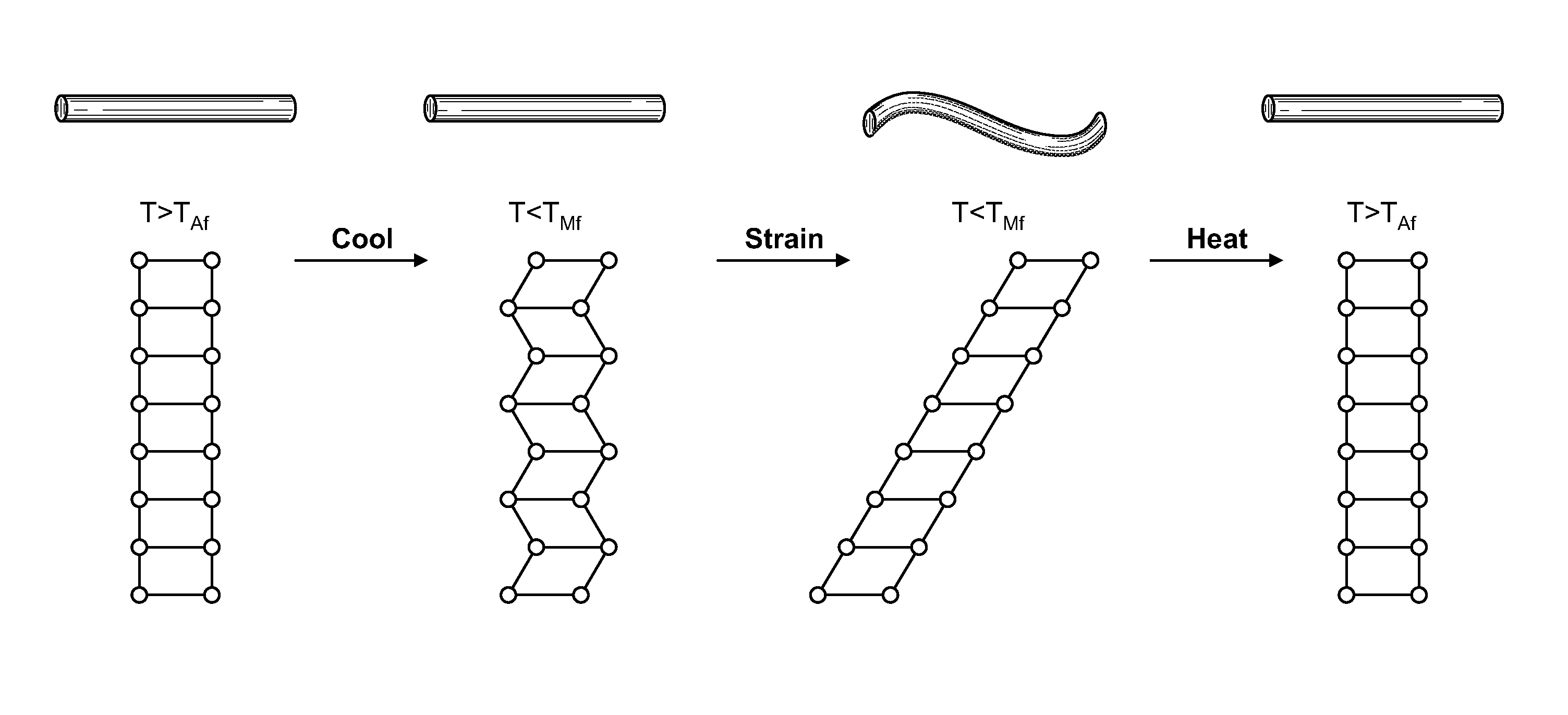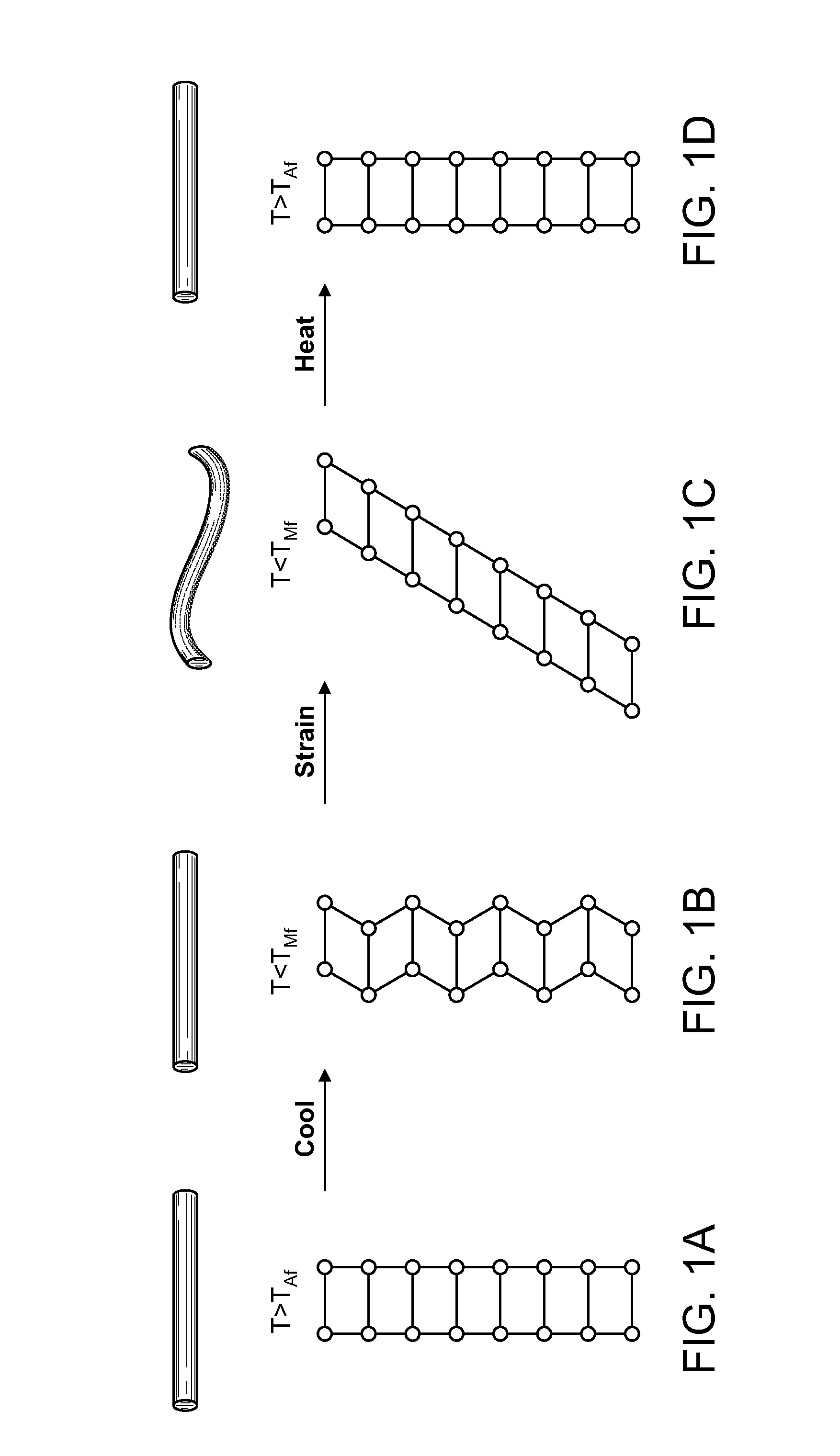Ceramic structures for enhanced shape memory and pseudoelastic effects
a ceramic and shape memory technology, applied in the field of ceramic shape memory materials, can solve the problems of relatively low transformation stress and correspondingly low energy dissipation level, ceramics, which are in general brittle materials, and can in general exhibit only very small shape memory strains, and achieves high strength, light weight, and rapid response characteristic.
- Summary
- Abstract
- Description
- Claims
- Application Information
AI Technical Summary
Benefits of technology
Problems solved by technology
Method used
Image
Examples
experimental examples
[0053]A crystalline ceramic material was formed by dissolving zirconium salts with cerium salts in a range of salt ratios between 0% and 30% cerium. Each mixed solution of salts was co-precipitated to produce ceramic powders of various compositions. A powder composition of 16 mol % CeO2 and 84 mol % ZrO2 was selected for formation of a crystalline ceramic structure. The ceramic powder was pressed and sintered uni-axially to produce bulk polycrystalline ceramic material. The grain sizes of the bulk ceramic material ranged between about 0.5 microns to about 10 microns. Differential scanning calorimetry (DSC) data from various compositions of the bulk ceramic material determined the martensitic transformation temperature points for the material as the austenite start temperature, TAs=−1° C. and the austenite finish temperature, TAf=18° C. The transition temperatures of the experimental bulk ceramic composition could not be directly measured using DSC because the heat of transformation ...
PUM
| Property | Measurement | Unit |
|---|---|---|
| temperature | aaaaa | aaaaa |
| volume fraction | aaaaa | aaaaa |
| grain sizes | aaaaa | aaaaa |
Abstract
Description
Claims
Application Information
 Login to View More
Login to View More - R&D
- Intellectual Property
- Life Sciences
- Materials
- Tech Scout
- Unparalleled Data Quality
- Higher Quality Content
- 60% Fewer Hallucinations
Browse by: Latest US Patents, China's latest patents, Technical Efficacy Thesaurus, Application Domain, Technology Topic, Popular Technical Reports.
© 2025 PatSnap. All rights reserved.Legal|Privacy policy|Modern Slavery Act Transparency Statement|Sitemap|About US| Contact US: help@patsnap.com



